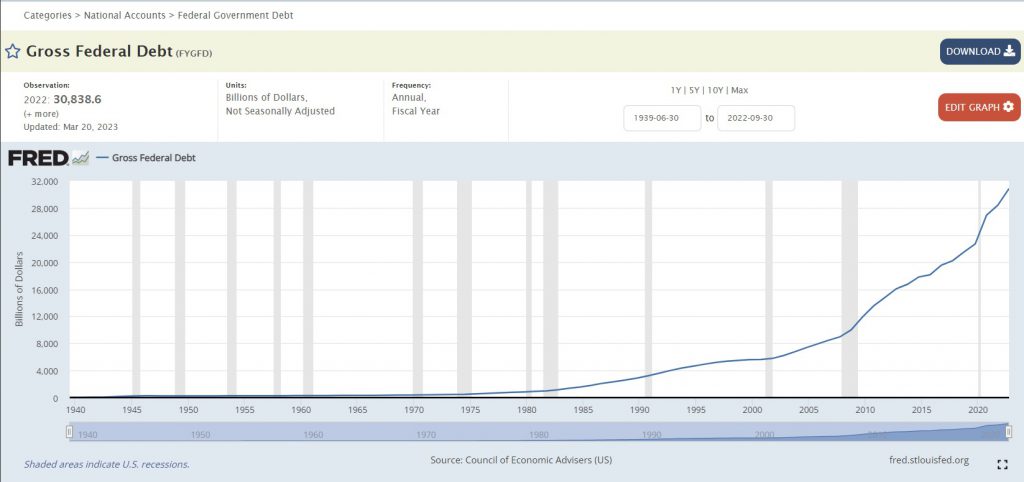The US economy has added $10 trillion in debt since 2020, nearly after Joe Biden took over the Presidency, according to data from the Federal Reserve Bank of St. Louis. The US national debt reached an all-time high of $33 trillion in 2023, experiencing an increase of $2 trillion in a year. The debt limit in January this year stood at $31.41 trillion and steadily rose for nine consecutive months. The debt crisis reflected a looming danger to the US economy as it gave rise to inflation and affected the consumer price index (CPI).
Also Read: BRICS Influence in Oil Sector Grows, Puts US Dollar in Danger


Inflation is up 3.7% this month and needs to fall below 2% for the US economy to cool down. The debt crisis comes at a time when BRICS is looking to dethrone the US dollar from the global reserve. An uncontrolled debt could lead to turmoil in the US economy giving undue advantage for BRICS to move ahead. Moreover, BRICS is ending reliance on the US dollar making the currency difficult to fund its deficit.
Also Read: Finance Minister Warns BRICS, Says De-Dollarization Leads to Disaster
US Economy: The Woes of $33 Trillion in Debt


If America fails to fund its deficit and import its inflation to other countries, prices of goods and commodities could skyrocket. Inflation is already a concern in America as prices of goods, real estate, and other day-to-day essentials have gone up. Rent across the country is rising and the average American is unable to afford a decent home.
Also Read: BRICS: U.S. Dollar to Experience a Tragic Ending, Predicts Economist
The US debt, if brought under control could make life better and affordable for the average person in the country. Lowering costs leads to positivity in the markets including creating new jobs, well-paying working hours, and safer communities, among others.
The debt ceiling is a cap on how much the United States Treasury can actively borrow to function. Now, lawmakers need to decide if they will lift the cap again, something that has been done over 100 times in the last century.





